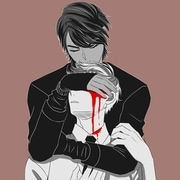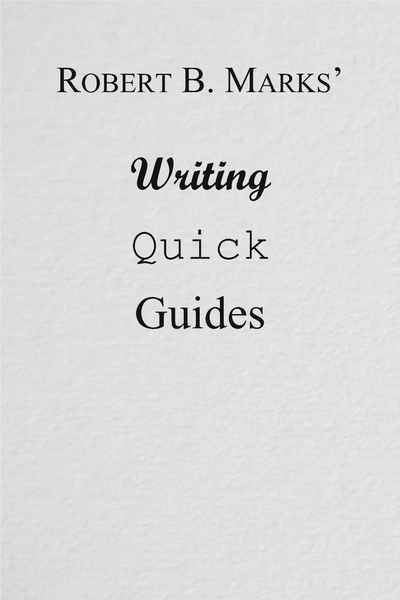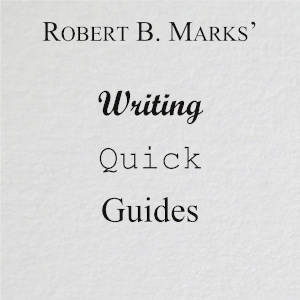Let's talk about about pacing and plotting! But first, a word from each of our seventeen sponsors...
Pacing is one of the trickier parts of storytelling to pull off. You don't have to look very far to find failures in it - movies that drag in the middle, series that race to the climax without taking a moment to breathe - and bad pacing can doom a story.
(And, as I realized as I wrote this, it's pretty indistinguishable from plotting in a way - you can't have a discussion about pacing without also talking about plotting.)
So, how does pacing (and plotting) work?
Imagine, for a moment, that a story can be represented by a sine wave. The peaks are intense scenes or sequences. The valleys are the quiet moments in-between. The more balanced the sine wave, the better the pacing of the story - if all you have are intense sequences, the story becomes exhausting to the reader and the sequences lose their impact. If there are long periods of nothing happening between them, the story becomes boring.
This, however, is an abstract way of looking at it. Let's get a bit more practical.
In Story, Robert McKee makes two observations that are very helpful for our purposes:
Any story uses an act structure in which an intense sequence is the end of an act. We tend to think of stories as having a three-act structure, but nothing says that they can't have 5 or 6 (McKee literally says that if three acts aren't enough to tell your story, just add more between the first and final acts).
Any scene must involve a "change of state" - McKee describes this as something that was positive for the characters becoming negative, or vice versa (such as losing/gaining a friend, going from ignorance of a thing to knowledge of a thing, etc.), but I think we can boil this down a bit further to "something must change during the scene." This can mean, for example, that a distraught character receives comfort, or a character that was holding everything together loses it, or a character receives an important phone call which they may or may not ignore. Put another way, at the end of any given scene, the story as a whole must be in a different place than it was at the start of the scene (so, a scene in which a character enjoys a relaxing cup of coffee and comes to a major decision should stay, while a scene in which a character enjoys a cup of coffee and nothing else happens should be cut).
Let's tease this out a bit further, and create a hypothetical second act to a story. The first act has ended with a major revelation, an action sequence, etc. (the actual type is irrelevant here, what is important is that it was intense). Here's what our second act will look like:
It starts with scenes in which the consequences to the end of the first act now play out. Perhaps a character was injured - they have to heal and the other characters react to their injury. Perhaps there was a major revelation - the characters have to realize the implications of this revelation. Perhaps the protagonist's love interest broke up with them or died - the protagonist now has to go into rebound or grieve. During these scenes, the protagonist will probably be reactive instead of active in pursuing their goals, although this is not a rule.
We now transition to scenes building up towards the climax of the act. Perhaps there's going to be another revelation - in this case, the protagonists might be investigating something. Perhaps the protagonist meets a new love interest or tries to win back their previous lover. Perhaps the protagonist starts or resumes seeking revenge against the antagonist who hurt them or somebody they care(d) about. Here the protagonist once again resumes being active in pursuing their goals. What is important here is that these scenes lead organically and logically to the major event that is the climax of this act, regardless of what that event will be (so, even if the act ends with a random event such as a character being hit by a car while crossing the street, that character has to have developed such that they are in a place where it would be logical that they would be distracted in some way while crossing the street).
The climax of the act. This is a major event or intense sequence. Again, it doesn't matter what it is for our purpose - what matters is that it is far more weighty and intense than anything that preceded it inside the act. If in an action story the act is filled of scenes with minor brawls in which nobody gets hurt, in the climax somebody has to get seriously hurt or killed. If in a romance the act consists of scenes in which the protagonist is courting a love interest, in the climax they have to lose, start or consummate the relationship. Again, none of these details are hard-and-fast rules - a romance could end the act with the protagonist or love interest being hit by a car - the hard-and-fast rule is regarding the intensity of the moment.
This gives us a second act that works and will not drag. Every scene moves the story or characters along. There is a smooth transition from dealing with the aftermath of the first act to building towards the climax of the second. But how do you put all of your acts together and make it work? Again, McKee has some useful guidance:
The climax of each act must be equal to or greater than the previous acts in intensity or narrative weight.
The climax of the next-to-final act and the final act must have different changes in state. So, if the climax of the next-to-final act is a defeat, the climax of the final act must be a victory, and vice versa. The exception to this is a bittersweet ending, in which there are elements of both victory and defeat.
There are a few ways this can manifest. In my book Re:Apotheosis, there are three acts, each of which uses a team battle as its climax. At the end of the first battle, Atria Silversword is injured, but not seriously. At the end of the second battle, Stella's fiance Adam is shot in the chest by Jack Death (a super-assassin along the lines of John Wick). The end of the third and final act will involve multiple character deaths.
But, this is only one approach, and while it works well for a three-act structure, it works considerably less well for stories with 5 or more acts, where a straight-up escalation can result in stakes rising to the point of absurdity (for example, consider Buffy the Vampire Slayer, where by the end of the show's run they had started lampshading the number of times they had saved the entire world). However, there is more than one way to increase intensity. A climax in which the protagonist has to sacrifice the principles that are dearest to them is more intense than a climax in which they don't, regardless of what shape this takes. What is important is the maintenance of escalation - the climax to one act can be equal in intensity to the previous climax, but at no point must it be less intense.
To sum up, pacing (and much of plotting) comes down to two main principles: every scene must involve a change of some sort that moves the story along, and the climax of each act must be equal to or greater than the climax that came before. Everything else is just details.











Comments (0)
See all